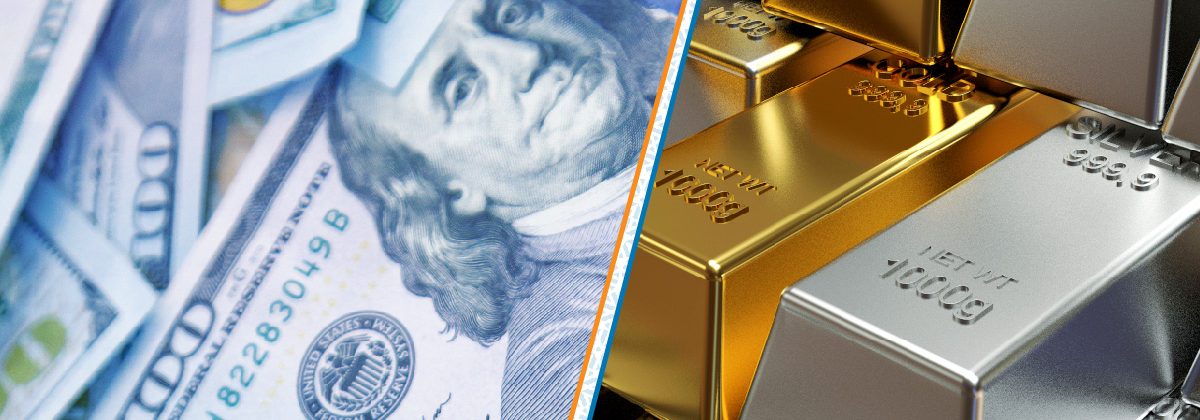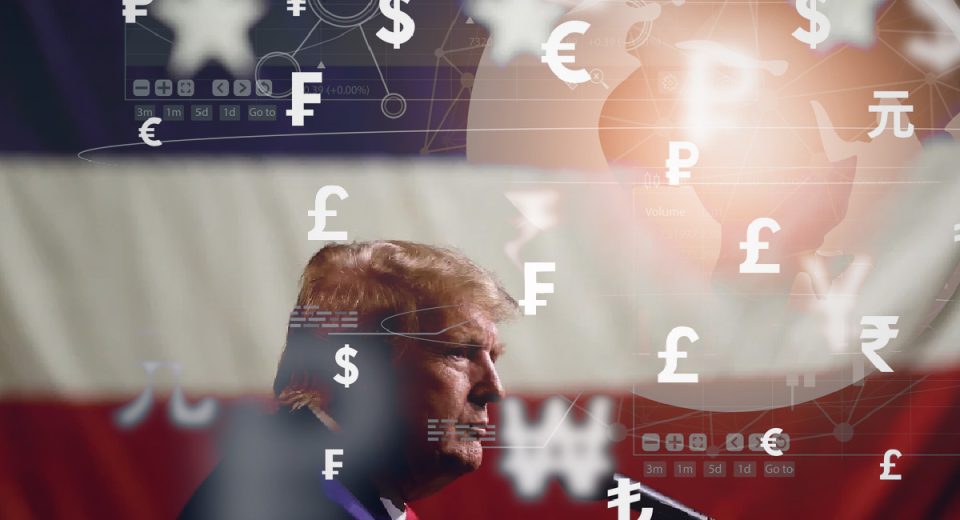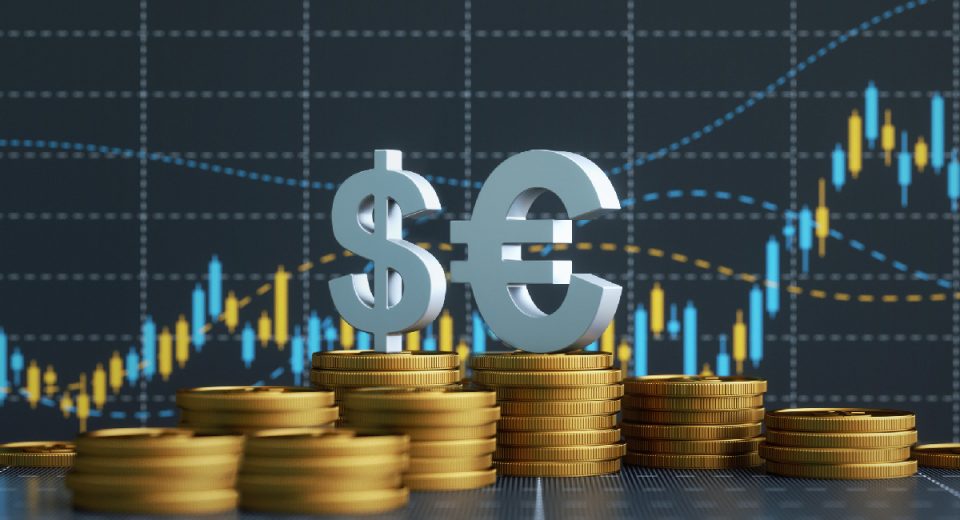Why Precious Metals Soared With Easing US Inflation

Precious metals have historically exhibited a direct linear relationship with inflation data. The surprise that came in October was the easing of US Inflation still saw gold and silver prices rising. Let’s first understand the relationship between precious metals and inflation and then look at how the October data release for US inflation impacted market sentiment.
The Relationship Between Inflation and Precious Metals
Inflation has a strong influence on gold and silver prices. Precious metals are considered a hedge against inflation. This is because inflation destroys the purchasing power of the domestic currency, which results in lower demand for that currency. When the value of a currency declines, investors in the country tend to turn to the yellow metal to preserve wealth, resulting in upward pressure on gold prices. So, when inflation rises, gold prices also rise. This relationship also holds true for periods of easing inflation, where we typically see a drop in precious metals.
What Were the US Inflation Results for October 2024?
The US announced an easing of its annual inflation rate for a sixth consecutive month in October. The inflation rate decelerated to 2.4% in September, from 2.5% in August. Although the figure was higher than market expectations of 2.3%, it still marked the lowest inflation rate since February 2021.
The US economy enjoyed a lower inflation rate mainly because of a decline in energy costs, which were down 6.8% in September, after a 4% decline in August.
The country’s annual core inflation rate unexpectedly rose to 3.3% in September, from 3.2% in the previous couple of months. Markets had widely expected the annual core inflation rate to remain stable at 3.2%.
How Did Previous Metals Respond to This Data Release?
Gold (AUX) prices snapped a six-session losing streak, rising 0.6% to $2,623.58 per ounce on the day of the data release. AUX/USD extended gains the next day, adding 1.1% to reach $2,658.42 per ounce. Silver prices also jumped to near $31.00 during the North American trading session on the day of the US inflation data release.
Why did gold and silver defy their historical tendency to move in the same direction as inflation?
Factors Causing an Inverse Relationship Between Inflation and Precious Metals
Elevated inflation has a strong adverse impact on the overall economy of a country. This is why central banks were quick to announce interest rate hikes as inflation soared in 2022. The US Federal Reserve announced 11 interest rate hikes in 2022, taking its benchmark interest rates from a range of 0-0.25% to a range of 5.25-5.50% by July 2023. Policymakers have since been looking for opportunities to lower interest rates.
Inflation easing in 2024 has allowed the Fed to turn dovish. The US central bank announced an outsized rate cut of 50 basis points (bps) in September. The US inflation data that showed further easing in October triggered speculations of more interest rate cuts by the Fed.
An interest rate cut weighs on the domestic currency. This is because it makes investments less attractive in the country. Speculations of the Fed announcing further interest rate cuts in 2024 and 2025 exert pressure on the US dollar. Declines in a country’s currency exert upward pressure on gold and silver prices (as investors turn to them to preserve their wealth).
The Fed’s anticipated monetary policy moves caused gold and silver prices to move higher with easing inflation.
Relationship Between US Dollar and Gold
US inflation has a much stronger impact on precious metal prices than other countries. This is because gold and silver are quoted in US dollars in the international markets. Any decline in the US dollar makes precious metals less expensive for foreign currency holders. This triggers demand for precious metals, resulting in a rise in prices.
The US dollar also competes with precious metals as safe-haven options. With the Fed expected to announce further interest rate cuts, investors could replace US dollars with gold and silver in their portfolios.
Other Factors That Move Gold and Silver Prices
This inverse relationship between US inflation rates and gold and silver may continue to play out till the Fed is done with interest rate cuts. The monetary policy of other major central banks could also impact market sentiment for precious metals. It’s important to understand, however, that there are several other factors that impact precious metal prices.
Apart from inflation, other economic factors impact precious metal prices. Gold traders keep a close eye on GDP growth data and payrolls report (job adds, unemployment, and wage growth). Also, news of the largest-ever stimulus announced by the Chinese government in early October drove bullish sentiment in gold markets. The use of silver in various high-growth industries, including automobile, AI, smartphones and solar can also support prices of the white metal.
Geopolitical tensions also support gold and silver prices. For instance, the commencement of the Russia-Ukraine war pushed gold to $2,000 per troy ounce in March 2022. The results of the upcoming US elections could also cause volatility in the global financial markets, including gold and silver.
These factors can trigger heightened volatility in the precious metal markets, generating attractive opportunities for commodity traders. Using CFDs is one of the popular ways to trade uptrends and downtrends. And don’t forget to watch US inflation data, which is released every month.
To Sum Up
- Inflation and precious metal prices typically have a direct relationship.
- US inflation eased in October, but both gold and silver prices soared.
- The relationship between inflation and gold and silver prices may be reversed by action of major central banks.
- Interest rate cuts by the Federal Reserve tend to weigh on the US dollar, which supports precious metal prices.
- Precious metals share a negative correlation with the greenback.
- CFDs allow traders to explore opportunities in both rising and falling markets.
Disclaimer:
All data, information and materials are published and provided “as is” solely for informational purposes only, and is not intended nor should be considered, in any way, as investment advice, recommendations, and/or suggestions for performing any actions with financial instruments. The information and opinions presented do not take into account any particular individual’s investment objectives, financial situation or needs, and hence does not constitute as an advice or a recommendation with respect to any investment product. All investors should seek advice from certified financial advisors based on their unique situation before making any investment decisions in accordance to their personal risk appetite. Blackwell Global endeavours to ensure that the information provided is complete and correct, but make no representation as to the actuality, accuracy or completeness of the information. Information, data and opinions may change without notice and Blackwell Global is not obliged to update on the changes. The opinions and views expressed are solely those of the authors and analysts and do not necessarily represent that of Blackwell Global or its management, shareholders, and affiliates. Any projections or views of the market provided may not prove to be accurate. Past performance is not necessarily an indicative of future performance. Blackwell Global assumes no liability for any loss arising directly or indirectly from use of or reliance on such information here in contained. Reproduction of this information, in whole or in part, is not permitted.




